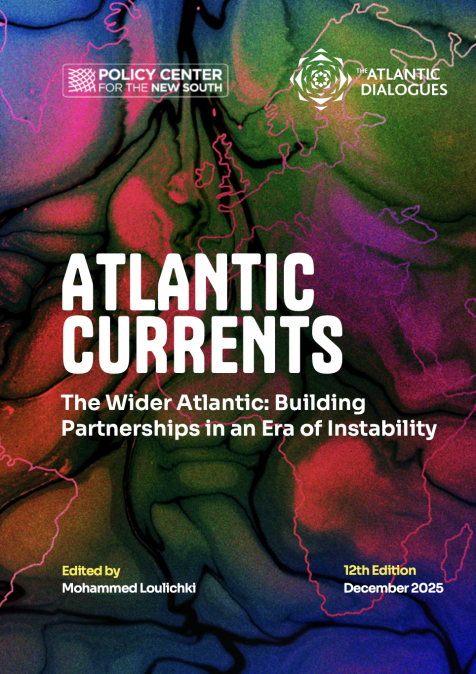Expert:
Publications /
Annual Report
Book / Report
Available soon on Livremoi & Amazon.
The 12th edition of Atlantic Currents explores how the Wider Atlantic can remain a space of cooperation and renewal in an age marked by instability. As geopolitical rivalries, technological competition, and climate pressures reshape the global order, the Atlantic Basin emerges not as a periphery but as a vital arena for pragmatic partnerships, shared problem-solving, and credible collective action.
This 2025 edition traces the shifting contours of the Atlantic’s strategic landscape, from conflict transformation and the pursuit of digital sovereignty and critical resources to the interlinked challenges of climate, security, and development. It explores the rise of flexible regionalism and the growing influence of South-to-South coalitions, while underscoring how connectivity, across physical, digital, energy, and knowledge networks, forms the backbone of integration. It also highlights efforts to advance an inclusive blue economy and to promote the Atlantic as a responsibly governed global commons.
By bringing together perspectives from both the North and the South, this volume reflects on the Atlantic’s role as a stabilizing force and a platform for dialogue, innovation, and cooperation in a rapidly evolving geopolitical environment. Across its chapters, it offers forward-looking insights into how this shared ocean can catalyze collective action on issues of common interest, strengthen resilience, and chart a more connected, balanced, and equitable Atlantic future.



